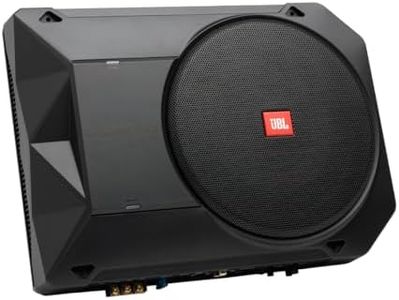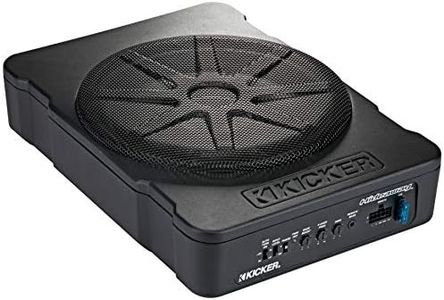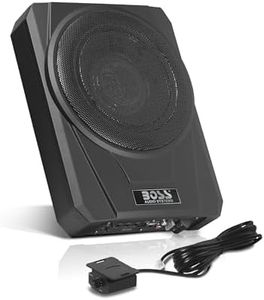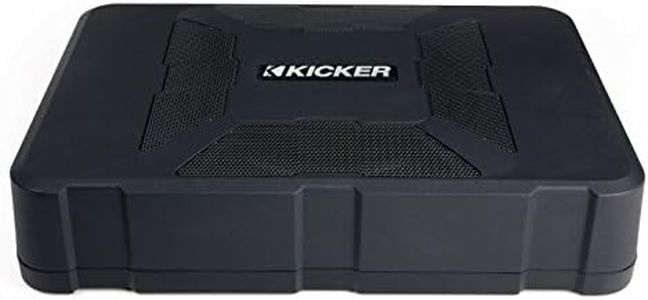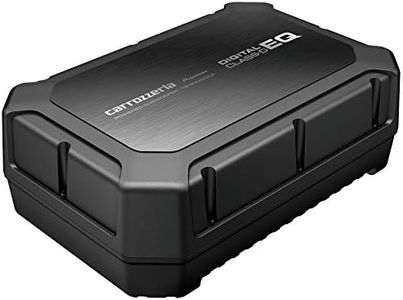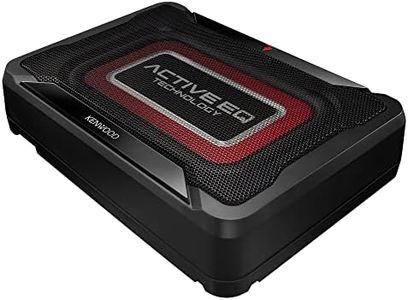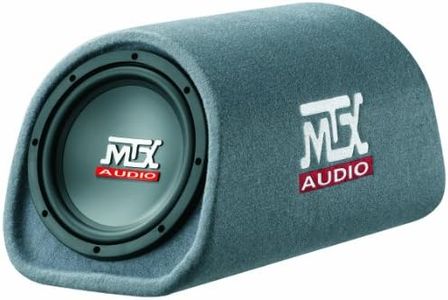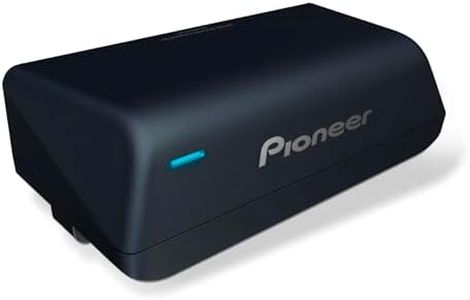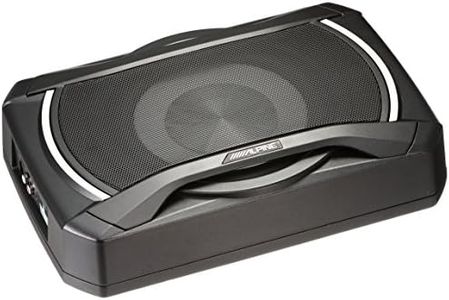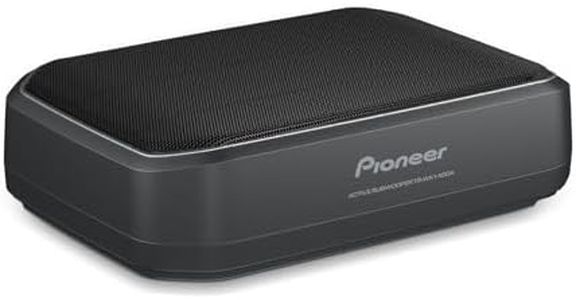We Use CookiesWe use cookies to enhance the security, performance,
functionality and for analytical and promotional activities. By continuing to browse this site you
are agreeing to our privacy policy
10 Best Underseat Subwoofer
From leading brands and best sellers available on the web.Buying Guide for the Best Underseat Subwoofer
Choosing an underseat subwoofer is a great way to improve your car's audio experience without sacrificing much space. These compact subwoofers fit neatly under the seats, delivering better bass and a fuller sound. When picking the right one, it's important to think about how much bass you want, how much space you have, and how easy installation will be in your specific car. Understanding key features will help you find one that matches your music preferences and vehicle setup.Power Output (Wattage)Power output tells you how much audio power (in watts) the subwoofer can handle and deliver. This spec is important because it affects both the loudness and quality of the bass. Generally, underseat subwoofers range from about 50 to 300 watts RMS (continuous power). Lower power (50-100W) works for gentle bass, perfect for spoken word or acoustic music. Mid-range (100-200W) is great for clearer and punchier bass suitable for a wide variety of music, while higher power (200W and above) delivers strong, deep bass for genres like hip-hop or EDM. Choose higher power only if you crave powerful bass and your car's electrical setup can handle it.
Size (Dimensions)The physical size of the subwoofer determines whether it will fit under your car seat and how easy it is to install. This is important to check before buying since car cabins vary in space. Most underseat subs are low-profile and compact, but you need to measure the clearance under your seat. Smaller units (around 2-3 inches tall) fit more vehicles but might offer less deep bass, while slightly larger ones (3-4 inches or more) might deliver fuller sound but need more space. The best approach is to measure your available space before shopping, and match the subwoofer's dimensions to ensure a good fit.
Built-in AmplifierSome underseat subwoofers include a built-in amplifier, which means they can boost the bass without needing a separate amp. This is helpful for easier setup and wiring. Built-in amps are ideal for users who want a simpler installation and are not looking to build a full custom audio system. If you're looking for strong, isolated bass and already have a powerful amplifier, you might consider a passive (unpowered) subwoofer, but for most people, choosing one with a built-in amplifier is the most straightforward solution.
Frequency ResponseFrequency response tells you what range of low sounds (bass) the subwoofer can produce. A wider frequency response means the sub can hit deeper lows and extend to mid-bass. Most underseat subwoofers have a range starting from around 20-30 Hz up to around 150-200 Hz. Lower starting numbers (20-30 Hz) give deeper bass feeling, while those starting higher (40 Hz or more) may not sound as deep. If you enjoy music with strong, deep bass lines, look for a lower starting frequency.
Adjustable Controls (Crossover, Bass Boost, Gain)Some underseat subwoofers come with knobs or switches to adjust crossover frequency, bass boost, and gain. This is important because it lets you tune the subwoofer to match your favorite music style and your car's other speakers. Low or no adjustability might work for simple setups, but more options are useful for those who want to fine-tune the sound. If you like to tweak your music or listen to a wide variety of genres, having adjustable controls is a plus.
Wiring and Installation OptionsHow the subwoofer connects to your car's existing system matters for installation simplicity. Some models offer line-level (RCA) and high-level (speaker wire) inputs, making them compatible with more car stereos. Quick-connect harnesses and included installation kits also make the process faster and easier. If you’re comfortable with car audio installation or plan to do it yourself, choose a subwoofer that matches the input types of your head unit and comes with clear instructions and accessories.
